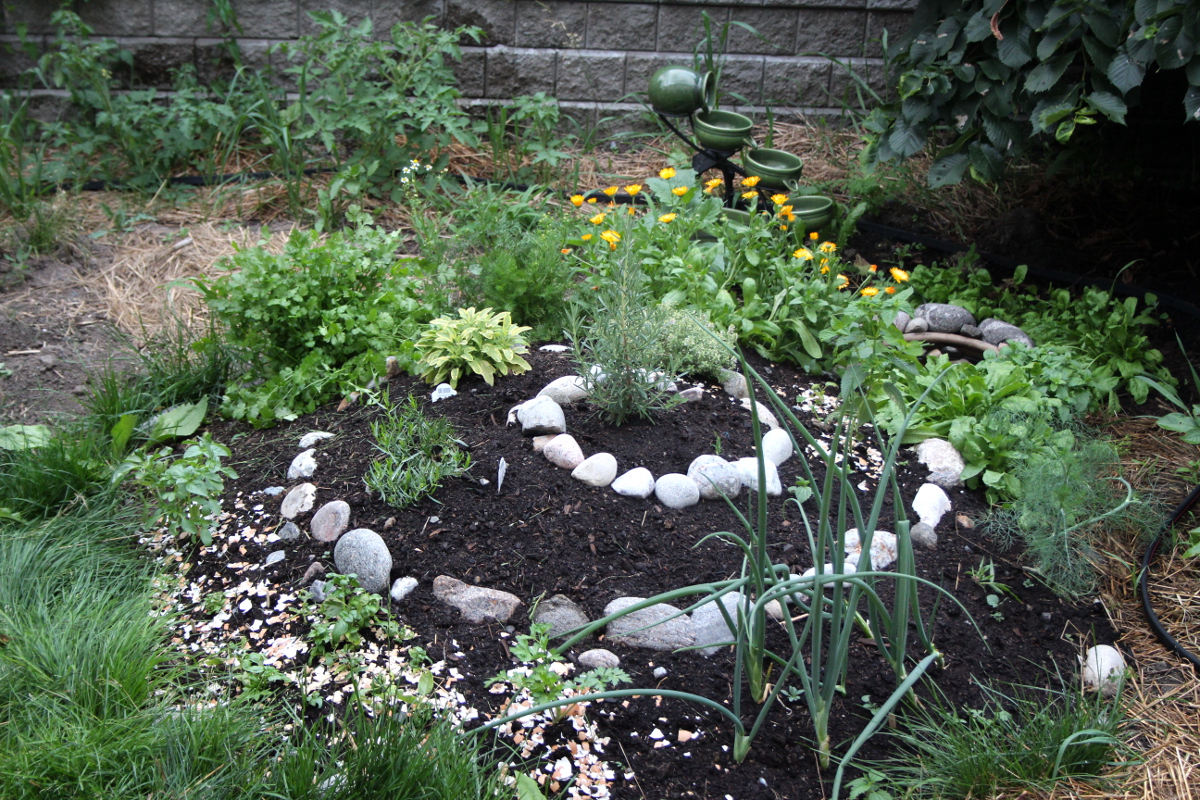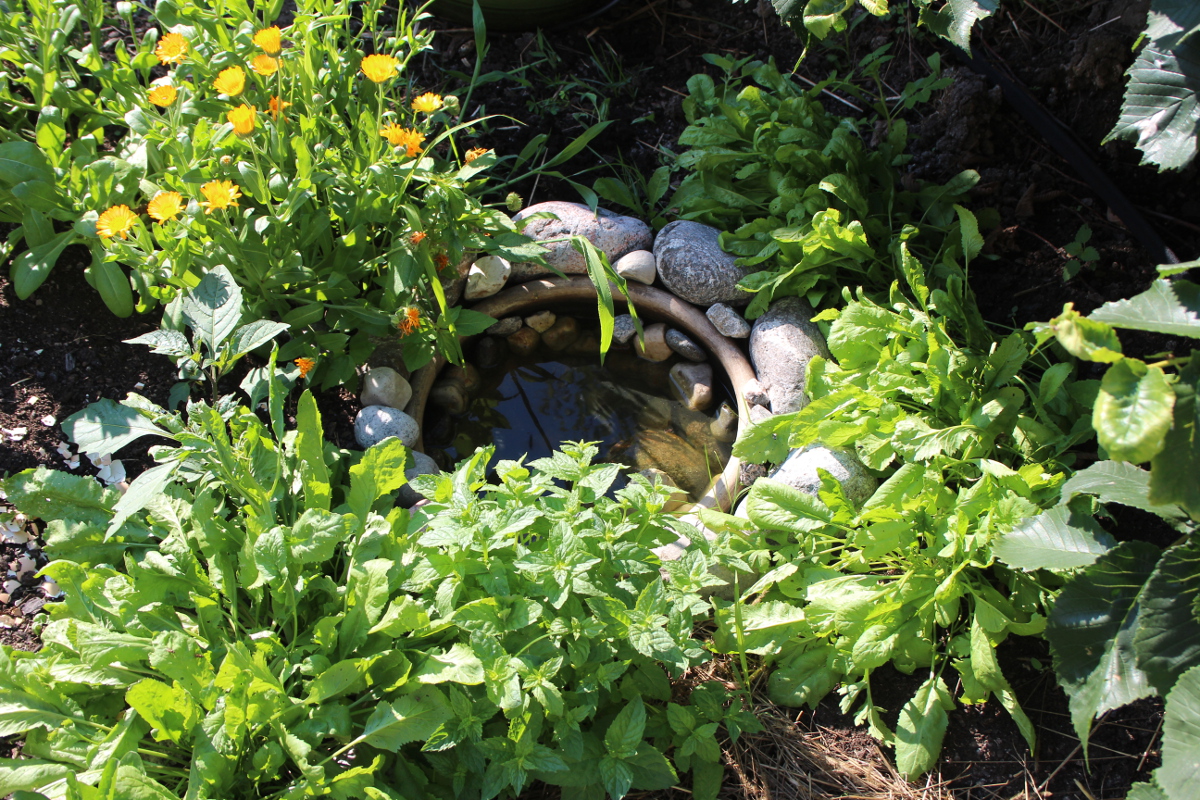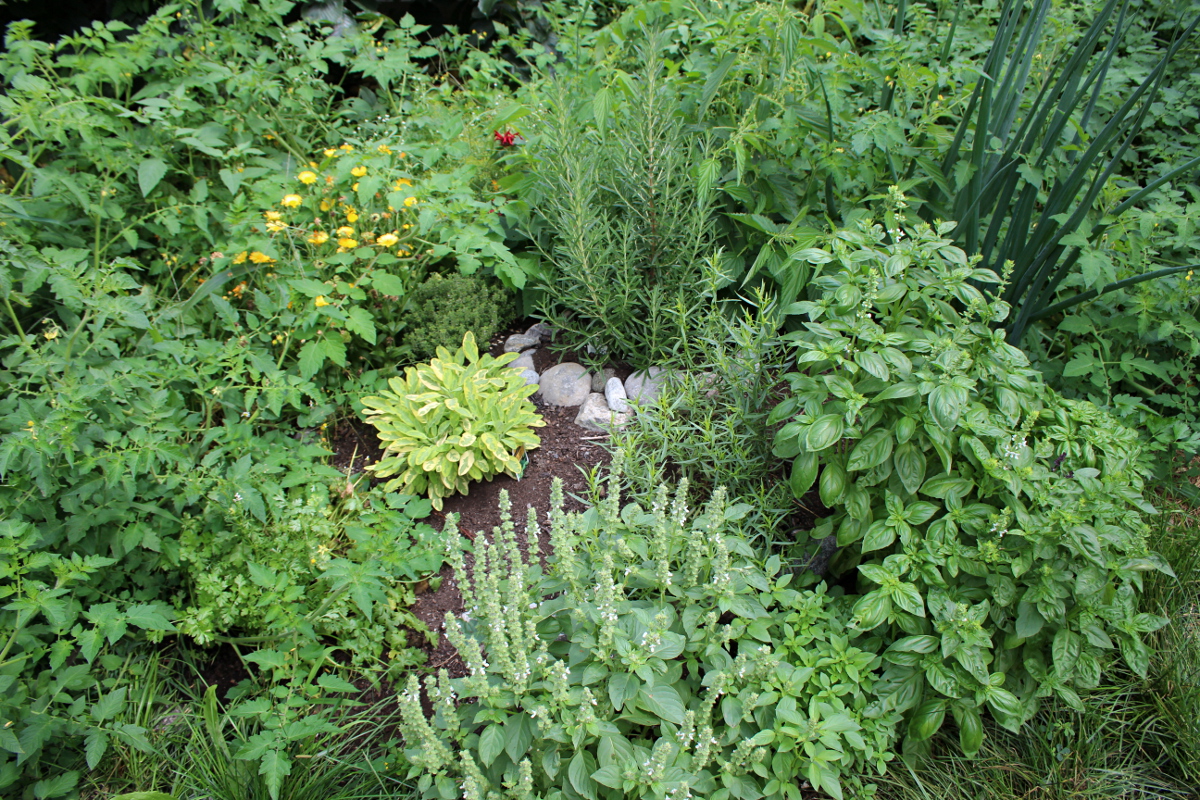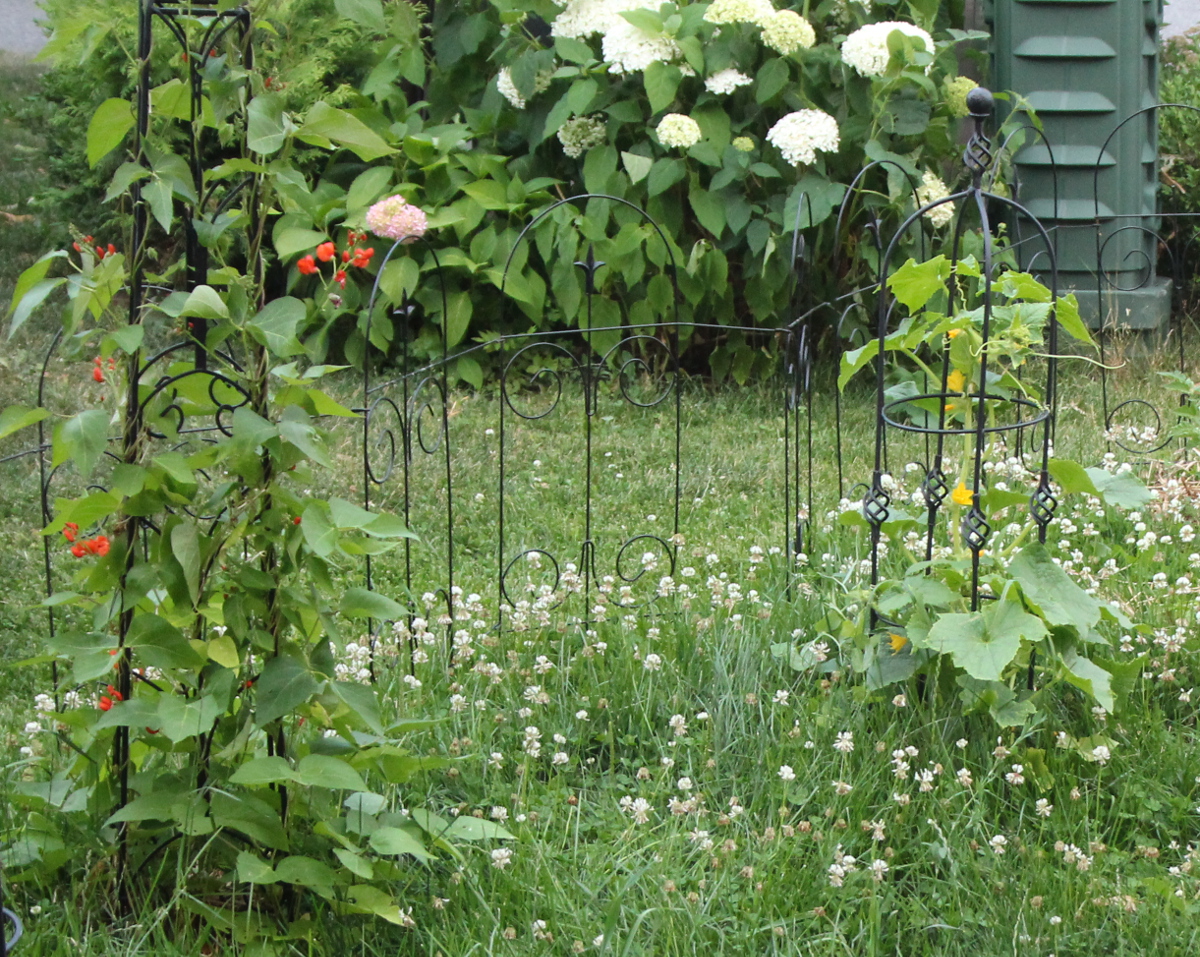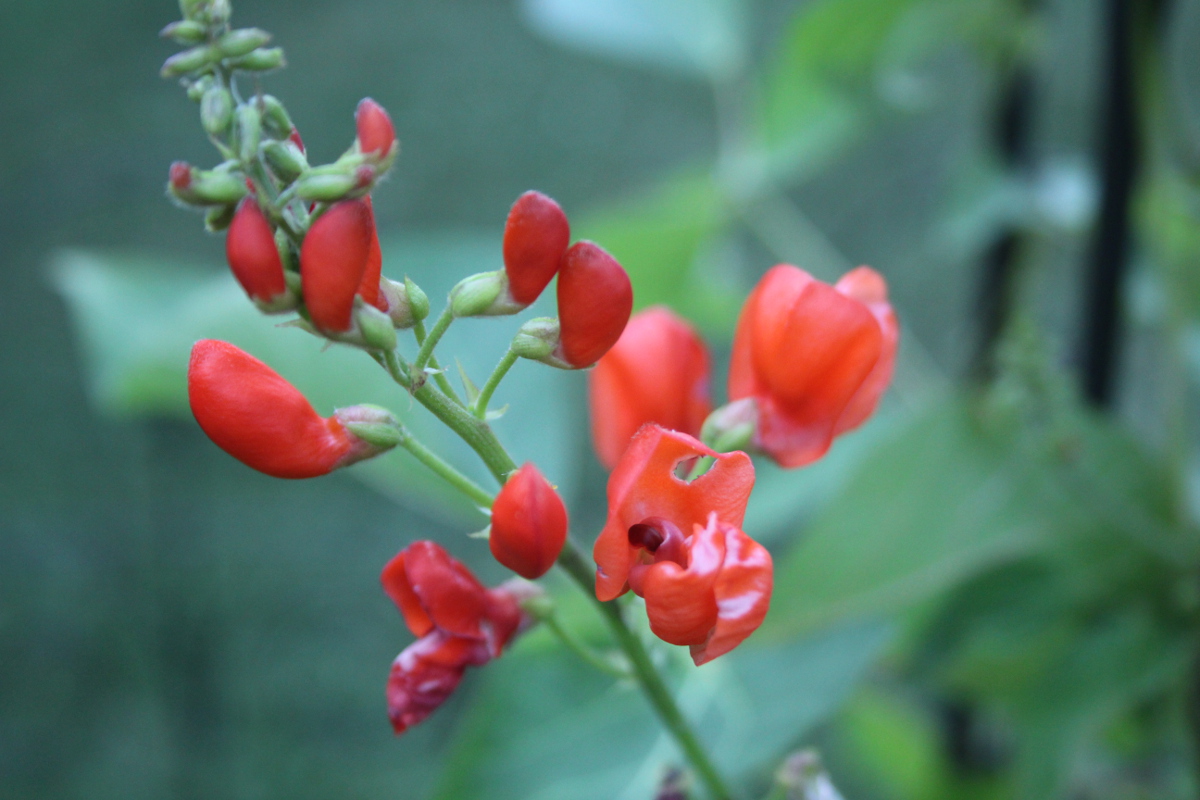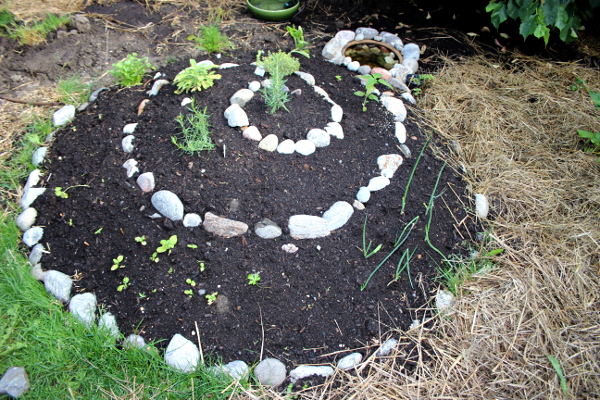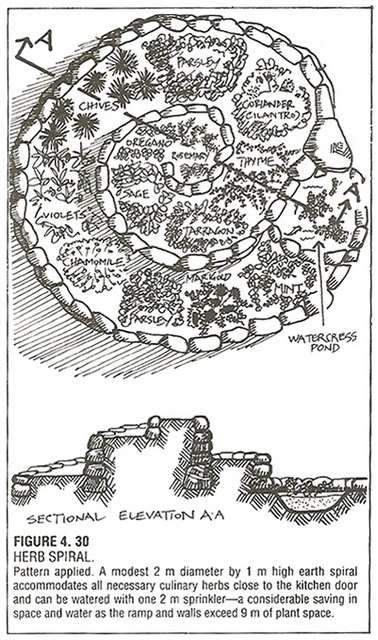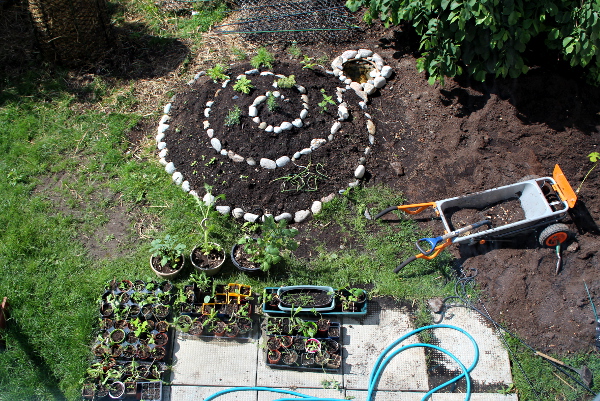Harvest time snuck up on us this year. There were warm autumn days, followed by a few rainy ones, one bright and sunny hot Thanksgiving day, and two days after the temperatures plummeted below zero. That same week, on Wednesday, late into the night, I had to rescue all the tomatoes, peppers, beans, and herbs that I could, and the following Saturday, the rest of the garden followed. Only the kale in the permaculture towers is remaining.
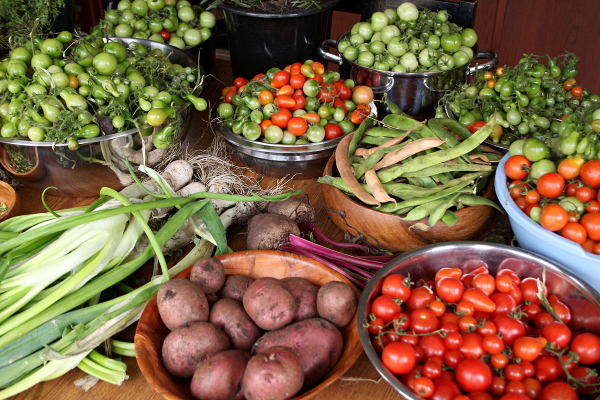
We have grown lots and lots of cherry, grape, and pear tomatoes this year. Moving into our new place delayed our planting of tomatoes. They did not look very happy, so I planted more, hoping that some of them will survive. Little did I know that they all would, and after sitting there unchanging for some time, in two weeks, they went from small bushes into a giant tomato forest, eventually shading the entire herb spiral and pretty much everything else in the garden. They climbed the towers, the trees, the supports, the grape and cucumber vines.
I managed to snap a few photos of the herb spiral before it got completely obscured by the tomato forest.
It came as no surprise, since our yard is facing North and plants themselves have created so much shade for their own fruit, that this year we have lots of tomatoes that have not had a chance to ripen before the frost. So, I shall be ripening them inside, off the vine.
Scarlet runner beans loved it in our front yard, and had put out more flowers, despite the cold. It was a wonderfully relaxing activity one cold evening a few days ago, with my two-year old helping me peel them and delightedly playing with the pods.
Similarly to last year, I have harvested a huge comfrey plant and have hung it to dry, along with lemongrass and stinging nettle, which is abundant in my new garden. Lemon verbena got replanted, and I’m thinking it will probably shed its leaves just like it did last year. The huge rosemary plant, parsley, thyme and sage got replanted into pots as well. I’ve used basil extensively for cooking, and the pods have now dried, leaving me plenty of seeds.
Arugula has given us many delicious leaves over the season, and more now when I have pulled it out. There are lots of seeds as well to save for next year.
I have dug out several potatoes from the two bushes I have planted. They are delicious – most of them have already been consumed. There are some beets and cucumbers, as well as lots of juicy thick green onions I have used in salads throughout the summer, and have now chopped up and frozen for the winter.
Lots of work over the past week to gather and process the harvest. More work to follow to save the seeds for the next planting season. Many thanks to the soil, the sun, and the rain that have nourished our food so it can nourish us.






